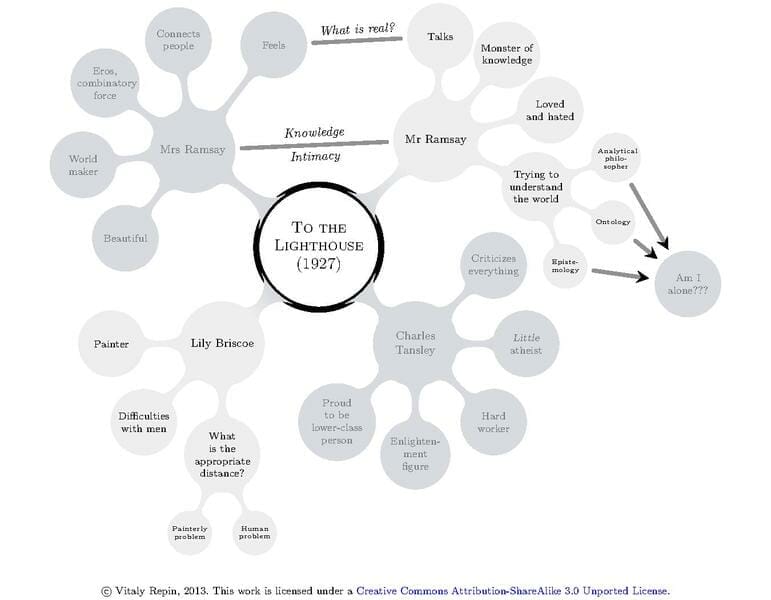Blogs that consistently publish get more traffic. More blog posts mean more opportunities for readers to find a blog in the search engines, and new posts give readers a reason to come back.
But continually coming up with good ideas for blog posts can feel daunting, even for experienced bloggers.
In this post, I’ll share five strategies for finding ideas to write about on your blog. Some of the ideas are fundamental and good for any writing project, while others are specifically tailored to blogging.
These strategies should make the process of generating blog ideas a lot less stressful— maybe even enjoyable.
Tip 1: Use One of the Many Powerful Prewriting Strategies
Prewriting is an important part of the writing process. It allows you to see what you already know about a topic, and it stimulates creative thinking. It gets the wheels turning. Here are few powerful prewriting activities you should try:
Brainstorm
Write a list of all of the ideas for blog topics you can think of. Do this quickly, allowing yourself to get into a flow. Don’t worry about the quality of the ideas. Just write anything that comes to mind that might be shared in a blog post. You’ll get more out of this exercise if you are in a comfortable setting with no distractions.
When you’ve finished, look through your list of ideas for interesting topics that you can develop further through freewriting and research.
You’ll probably have some very bad ideas on the list. That’s a good thing. You can sometimes gain clarity by seeing the topics and ideas you definitely don’t want to write about.
Freewrite
Write nonstop about your topic for a designated period. Write whatever comes to mind. Don’t worry about grammar, spelling, punctuation, or silly ideas. Just write. Allow yourself to go off on tangents. If you can’t think of any thing to write, write “I can’t think of anything to write about.”
While it’s okay if you stray to an entirely different topic while freewriting, you might try focusing on your curiosities and emotions pertaining to your chosen topic. What do you fear about your topic? What do you love? What seems odd? What seems dull? Funny? Unfortunate? Emotions are terrific motivators for writing. Allowing yourself to get swept away while freewriting will lead to more writing, more raw material to work with later.
After you have finished your freewriting session, take a break before coming back to what you’ve written. Look for promising leads that are worthy of additional research.
Create a Mind Map
Mind mapping is my favorite prewriting strategy. I create a mind map before writing every blog post. A mind map is a visual representation of related ideas tied to a central topic. Here’s an example of a mind map used to organize a character analysis of Virginia Woolf’s To the Lighthouse:

Image credit: Vitaly Repin
Here’s another with tennis as the subject, which is hand-drawn and uses a variety of colors:

Image credit: http://mindmapping.bg/
Mind maps engage the brain differently from freewriting or brainstorming because of their visual nature. You arrange text spatially in a nonlinear fashion. You can use different colors for different branches. You can include drawings and images. And when using mind mapping software, you can paste links to websites and videos.
This level of engagement sparks creativity and helps you make surprising connections. Mind maps also keep you focused on the topic because no matter how far your lateral thinking takes you, you always come back to the original topic in the center.
As you see, you can draw a mind map by hand or create one using mind mapping software. Each has its advantages. Drawing gives you a tactile experience, while using software lets you make quick changes and allows you to store and export your maps as needed.
Tip 2: Do Some Good Old Fashioned Research
After you’ve settled on a topic, you must do some research. Research is important because without it, you won’t know how your writing stands in relation to what others have already said about your topic.
Read from a variety of sources and consume different types of content. Search for your topic on YouTube and watch several videos. Listen to podcast episodes on your topic. Don’t worry about spending too much time doing research; you will likely come across related ideas for future posts, so the time will be worth it.
How much time you actually spend on research, of course, depends on your topic, its scope, and your goal for the blog post. Some topics need only a day or two of research before you can start writing. Other topics may be so important to you that you feel compelled to read a few books before you are ready to take a position on the topic.
As you research, be sure to organize your notes efficiently so that you have ready access to them when you start to draft your blog post. I recommend using an app like Evernote or OneNote for easy storage and retrieval.
When engaging with your sources, ask important questions:
- Does this source confirm or contradict my initial beliefs about my topic?
- What important or interesting points does this source make that others do not?
- What is the credibility of my sources?
- What patterns emerge? Do I notice any shared misconceptions about my topic?
- Is there conventional wisdom shared by my sources that needs to be challenged?
- What sources do my sources use and are these worth following up on
There is no defined end to the research stage. The writing process is a non-linear activity, so expect to find yourself returning to your sources (or searching for new ones) after you’ve started writing your post.
Tip 3: Let Machines Help You Out
Using an idea generator for content is a fun way to come up with ideas, especially when your stuck. Examples of idea generators include Hubspot’s Blog Ideas Generator and Portent’s Content Idea Generator.
Simply enter a word or phrase for your topic and an algorithm with generate a list of ideas to write about. The results are in the form of headlines, and they’ll sometimes come across as clickbaity—some will be outright silly. But you’re also likely to see some intriguing headlines, kernels you can pop into interesting posts. Besides, the silly results can actually lower the tension you may have over coming up with ideas.
Here’s a sample of the results I got when I typed in the subjects writing and blogging.
- 12 Ways Writing Could Leave You Needing a Lawyer
- Why Writing Ain’t as Good as it Used to Be
- Why Do People Think Writing is a Good Idea?
- 7 Secrets About Writing the Government is Hiding
- How Writing is Bringing Sexy Back
- Why Your Writing Never Works Out the Way You Plan
- 20 Myths About Writing
- How Blogging Made Me a Better Person
- 17 Great Articles About Blogging
- An Expert Interview About Blogging
- The History of Blogging
- 5 Tools Every Blogger Should Be Using
- 15 Best Blogs About Blogging
- What Will Blogging Be Like in 100 Years?
- 14 Common Misconceptions About Blogging
Some of these results likely had you rolling your eyes, like say, number 5. But even silly results can you get you thinking about more serious angles; for example working off of number 5 I might try writing a post called Writing Advice That Has Lost Its Popularity [its sexiness] and Why?
Or take number 4: there may not be an Area 51 of writing, keeping powerful alien secrets of the written word, but this headline does get me thinking about government writing and its tendency to dehumanize language by using passive voice to the extreme and to scare off readers with jargon and excessive nominalizations. Maybe I could I write a post about how exposure to Official Style affects our own writing and what we can do to avoid its influence.
Answering number 14 would be a great opportunity to layout what I think would be fundamental principles and strategies of blogging, no matter how much the technology changes in the future.
As you can see, riffing off an idea generator can be fun, and more importantly it can spark your creativity.
Tip 4: Ask Your Audience
As writers we spend so much time defining our target audience, making an inventory of their beliefs and values and needs, that we forget that audience analysis doesn’t need to be a guessing game.
If you want to learn about the needs of your audience, just ask them. You might reach your audience through social media or via email if you have an email list.
Here are some basic questions you can ask your audience:
- What specific projects are you working on? What specific goals do you have?
- What are the biggest obstacles keeping you from achieving your goals?
- What topics or issues do you enjoy reading about or engaging with?
- Which of my content pieces have been most helpful? Which ones have helped the least? How could I improve the usefulness or value of my content?
Asking for feedback directly can spark a conversation and lead to a closer connection and better understanding between you and your audience.
While one-to-one conversation is fruitful, the obvious disadvantage is that it can be time-consuming and the amount of feedback you receive will be limited. To get more feedback more quickly, you can ask your audience to respond to a survey. A survey will let you identify the needs of your audience as a whole (and you’ll be able to identify key important divisions in your audience based on their interests and level of experience). In trying to meet their needs, you’ll generate ideas for content. And you’ll be aided by a greater sense of clarity and focus.
There are many free survey tools you can try, such as Survey Monkey and Google Forms.
If you don’t have an email list or a social media following, you can use other strategies to learn more about your audience’s needs.
One strategy would be to identify several other blogs similar to your own and read through the comments sections. What follow-up questions are people asking? What do people seem interested in learning more about?
Other places to look include the comments section of YouTube videos about your topic. Amazon reviews of books in your niche are another great source for learning about your audience’s needs. When a book fails to deliver for an audience, that audience is not shy about letting others know the reasons. You’ll likely get more valuable information from 3 star reviews, as opposed to 1 and 5 star reviews, since they tend to be more measured and more informed.
However you learn about them, addressing audience concerns is fertile ground for generating ideas for future blog posts.
Tip 5: Remix and Repurpose
A great way to generate content is to repurpose and remix existing content.
Repurposing content means taking existing content and delivering it through a new medium, a new genre, or a new context. For example, you might take content from a blog post and turn it into a video to be shared on YouTube or Facebook or other social media platform. You might take the transcript from a podcast episode and publish it as a blog post, adding an introduction, show notes, and other commentary about the episode.
Repuposing allows you to reach new audiences because people have diverse preferences for consuming content. Some are die-hard readers, while others are podcast junkies. Delivering content in a variety of media increases exposure to your message and allows you to help more people.
In addition to reaching more people, repurposing creates new value propositions. For example, you can take the content from a podcast episode and turn it into an infographic. The content in the infographic would now have its own value, separate from the content in the podcast. An infographic, with its physical constraints, requires concise communication of major points. This is great for audiences who need only quick reference to these ideas and who want to share digestible information with their own audiences. The podcast, on the other hand, is more suitable for those who want to listen to a deeper discussion of the topic.
Remixing means taking parts of existing content and putting them together to make something interesting or new. This is something we all do. When we write, we pull ideas together from an array of sources and formulate them into a our own claims and principles. But remixing refers to a more deliberate approach to chopping things up and putting them together in a new way.
One of the most common forms of remixed content in the blogging genre is the roundup post. A roundup post usually takes one of two forms. The first is a collection of tips or ideas taken from different sources and assembled into a post about a single topic. For example, a blogger might compile 9 important articles on the topic of writing persuasively online. The post would include one or two key points from each article (along with a link back to the full article) and personal commentary or analysis from the blogger.
The second common type of roundup post is the expert roundup, where the blogger reaches out to well-known authorities with a question about a topic and organizes their separate responses into a single post. The blogger again provides a link back to the respondents’ website and may or may not provide commentary or analysis.
Another way to remix and repurpose content is to use source material with an open creative commons (CC) license. Some CC licenses allow you to freely re-use content for your own purposes. Just be sure to check the requirements of the exact license being used. For example, the CC BY 4.0 license allows you to “copy and redistribute the material in any medium or format;” and “remix, transform, and build upon the material
for any purpose, even commercially.”
Working from CC licensed material allows to think of interesting ways to remix and repurpose the content for your audience. I use CC licensed content on this site for certain topics that I just don’t feel like writing from scratch. Instead what I do is look for opportunities to improve on what I see. Sometimes this means splitting a long article into three shorter ones. Sometimes it means taking material from two different CC licensed sources and putting them together, while adding my own additions and revisions.
Here are a couple of pages from this site that are based on CC licensed sources:
Finding CC-licensed content is easy to do. This short video shows you how to filter your search in Google to find images, but the same filter is used to find web articles as well:
You can also change the filter to display works in the public domain, which are always free to use.
Conclusion
By using these five strategies for generating ideas, you'll never be at a loss for content to publish. As you make these strategies part of your blogging routine, you may find yourself with a most welcome problem: having so many blogging ideas you're not sure where to start.
